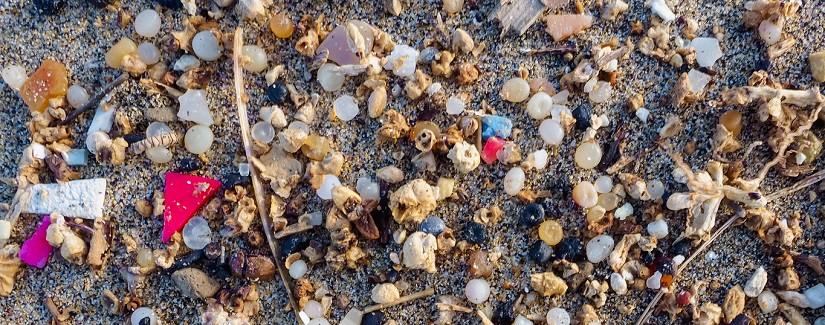Cristina Leon Vera | 23/01/2024
The term pellets has become popular in recent weeks, following the merchant Tocanao’s dumping into Portuguese waters, the misplaced cargo of which included more than twenty-six tons of plastic pellets that have flooded the sea and reached Spanish coasts.
The plastics industry is of international relevance, as it is a primary input in a wide variety of applications and therefore in almost all economic activities. According to the latest ‘Plastic Industry Report in Spain,’ the plastics industry in our country is made up of more than 3,700 companies: a majority (3,374) are devoted to plastics transformation, as well as manufacturers of molds, machinery and equipment for manufacturing (168). 162 companies focused on recycling in 2023. More than 125,000 people are employed in the sector and turnover is equivalent, according to the latest registered data, to 2.3% of national GDP.
Industry pelletization
Pellets (also known as chippings, nibs, or nurdles, as the European Commission points out) are small granules —microplastics up to 5 mm—that serve as raw materials to produce all plastics. These pieces are now a must for the industry because they are easier to handle, transport and transform, both for new production and recycling thanks to their consistency and small size.
Pellets are usually composed primarily of one or more plastic polymers (such as polyethylene (PE), polypropylene (PP), polystyrene (PS), and others) and sometimes contain other additives. When there is a concentrated mixture of pigments or additives within the pellet it is known as masterbatch. These compositions are used to produce everything from electronics and cars to toys.
The plastic pellet manufacturing process essentially involves four steps:
- the evaluation and weighting of the raw material (dosage),
- additive addition (mixing),
- cutting and shaping the chosen portions (pelletization)
- and removal of water contained in the process (drying).
To make this transformation, there are currently three standard machines, with a different operation and objective:
- of filaments —where the cut is made after cooling—,
- water ring —resulting in a flat, rounded chippings—
- and underwater —producing spherical pellets—.
Commitment to reduce environmental impact
In the center of the controversy after the recent spill that has reached the Spanish coast, plastics have always been criticized for their environmental impact. Industry pelletization is, in this regard, a double-edged weapon. On the one hand, its manufacture consumes less energy and reduces the emissions of greenhouse gases, its characteristics make it easier to process plastics used for recycling or reuse, avoiding waste.
On the other hand, plastic chipping losses in the environment are the third source of unintended release of microplastics to the planet and these occur at all stages of the supply chain, from production to transportation to other logistics and waste management operations. In this regard, the main international institutions participating in the industry have been committed to rectifying the risks derived from the activity. In April 2023, the International Maritime Organization addressed, through its Pollution Prevention and Fighting Subcommittee, the classification of these chippings as a dangerous load subject to the International Maritime Code of Dangerous Goods (IMDG), to apply to its transportation under proper regulation.
On the other hand, in October last year, the European Commission published a report with the measures to be taken in order to avoid contamination by microplastics due to the involuntary release of pellets. In said study, the European Commission notes that four types of adverse effects can be observed with plastic pellet spills:
- On the environment
- On the weather
- On human health
- And on the economy
With this proposal, it is intended that operators who manipulate the chippings in some of its phases take a number of measures so that their impact on the ecosystems of their environment decreases between 54% and 74%.
Measures aligned with an international project
The measures proposed by the European Commission are shared by the OCS (Operation Clean Sweep) initiative, an international plastics industry project that shares the goal of reducing chipping leaks as much as possible and is supported and committed by the Spanish Association of Plastic Industrials (ANAIP). The main actions to take, according to this organization, would be:
- Best handling practices for economic operators, who must develop a risk assessment plan for each facility to optimize their activity and develop preventive measures to prevent leaks.
- Mandatory certification for companies that handle plastic chippings in amounts greater than 1,000 tons in the calendar year. Said certificate must be renewed every three years for large firms and every four years for medium-sized firms.
- Smaller companies (micro and small businesses) will face less stringent requirements: they will need to make self-declarations of conformity and declare, through a notification system in national registries that will be created by member states.
- To facilitate the estimation of chipping losses, the European Commission proposes to have a standardized methodology established in a harmonized standard adopted in accordance with European regulation, as well as greater responsibility in line with the increase of social awareness regarding environmental impact.
This new regulation could come into force in 2024, although to this day it still does not have a roadmap established for its assimilation in the industry.





